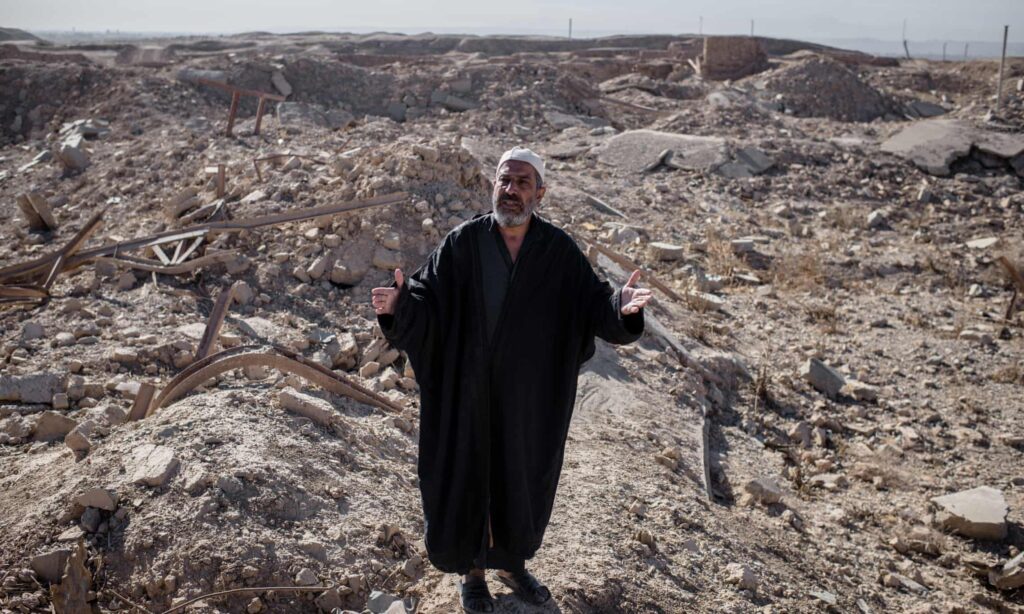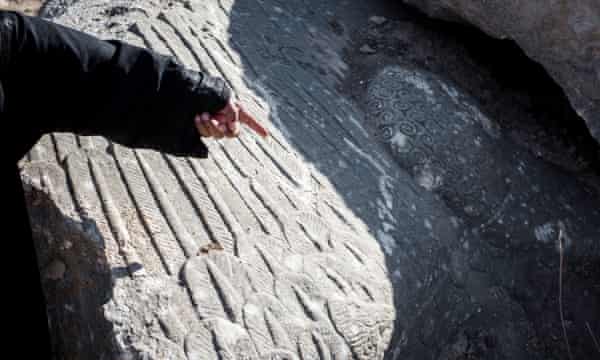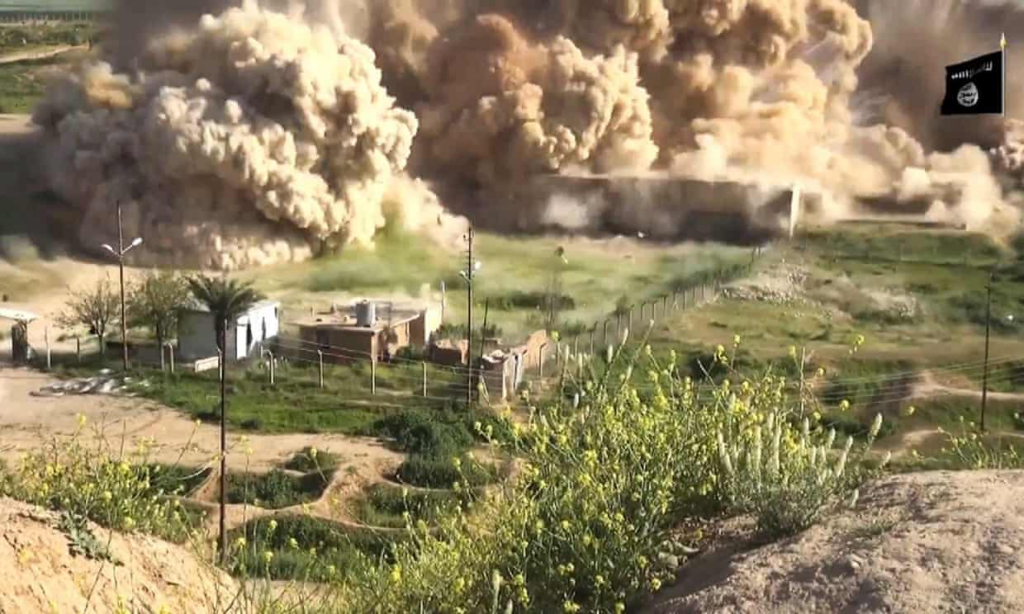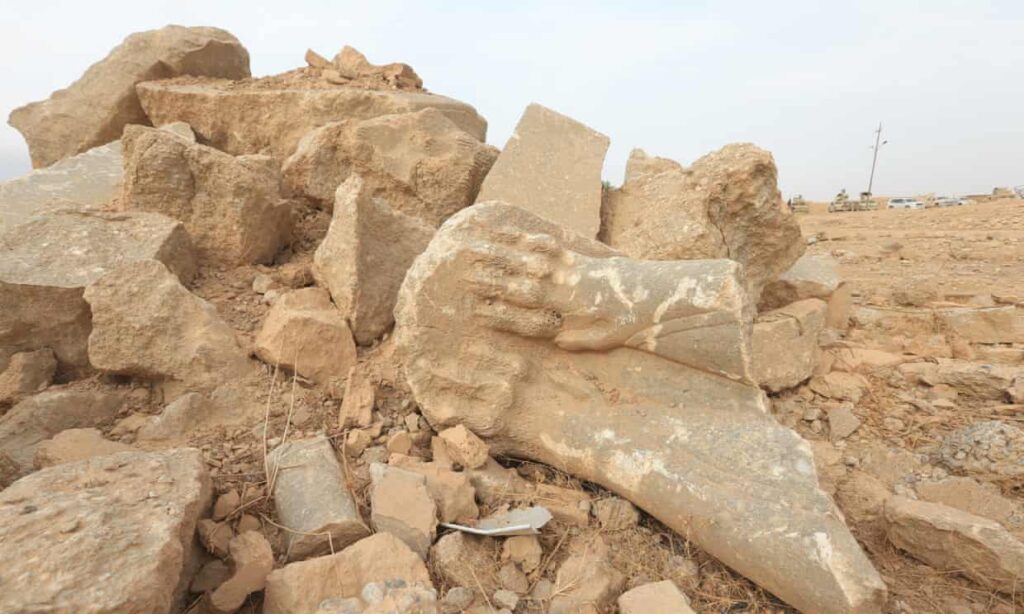Why ISIS Hates Archaeology and Blew Up Ancient Iraqi Palace
The broken remains of Nimrud tell numerous people different things. To Sheikh Abdullah Saleh, a custodian of the ancient site until he was chased away by Islamic State extremists two years ago, they represent nothing but destruction and loss.
The hulking piles of rock are a big jigsaw riddle for Iraqi archeologist Layla Salih, from which one of the world’s most significant ancient sites might be slowly rebuilt.
Both the sheikh and the scholar have stood in the rubble of Nimrud in the week since the Iraqi military reclaimed what remained of it.

Salih was at the site picking out inscriptions from cracked stone and, in her mind’s eye, reassembling the giant winged buffaloes, known as lamassus, which Isis had laid to ruin among dozens of other priceless artifacts that had been there for almost 4,000 years.
“There are fragments that can be repaired,” she said. “The winged buffaloes in particular. It is not all lost. It was a really sad vision, but what can we do? We expected it. The good thing is we can put it back together.”

The view looked very different to Sheikh Saleh days after he returned from a year-long exile at the hands of the marauders who had chased him from town for trying to protect what, to him, was both a national treasure and a personal livelihood.
“This has been here for thousands of years, before Jesus,” he said amid piles of rock that had once formed the heart of the city known to the ancient Assyrians as Kalhu. People used to visit from all over the world, especially before 1991. “It used to generate money for our village. Many of our people worked here,” he said.
“Then one-day last year, they came around the village with a truck and loudspeakers. They told us to open our windows because there would be a big explosion. It was so big that our houses were covered in rocks.”
Iraq’s deputy antiquities minister, Qais Rasheed, estimates that as much as 70% of Nimrud has been destroyed by Isis. The scale of the site’s ransacking suggests his estimate might be conservative but Salih said a trained archaeological eye could pick out enough scattered remnants across the landscape to suggest that all might not be lost.
“There were pieces that I could put together in my mind,” she said. “Small things and big things. I hope we can make this happen.”

There are some encouraging signs. Salih said a meeting with Unesco and the governor of Nineveh province to yielded a commitment to divert funding from a long-stalled archaeological project into rebuilding Nimrud. “It’s a substantial figure,” she said. “It will get us started. Initially, we will document the losses and protect the site. We hope to start this from the beginning in the coming year.
Sheikh Saleh said the site needed to be protected by guards to stop the pillage of what remains of Nimrud. “We need to put guards there right away,” he said, warning that a failure to lock it down could lead to a repeat of the looting that followed the US invasion of Baghdad in 2003, after which the Iraqi National Museum was pillaged by Iraqi civilians and US forces.
Thirteen years later, many of those stolen artifacts remain unaccounted for and continue to fetch high prices on a lucrative black market for stolen antiquities. Other sites around Iraq have also been looted in the instability that has plagued the country since the US invasion.
The Mosul Museum, where Salih was a curator until 2009, has been largely emptied by Isis since it took the city in mid-2014 and started a rampage to erase anything that pre-dated the Islamic era.
The Nineveh plains, on which Nimrud stands, is one of the world’s cradles of civilisation and is a heartland of Assyrian cities and Christian communities. As well as laying ancient cities to ruin, Isis rampaged over modern towns and villages in the area until the fight to reclaim them began by Iraqi forces and Kurdish peshmerga.

From his vantage point, Sheikh Saleh is sceptical about how the military might that is being brought to the battlefield could do so little to stop Isis as it methodically worked through Nimrud with dynamite and sledgehammers.
“They try to save the oil companies, but they do not try to save Iraq’s history,” he said of the fighter jets that buzz overhead. What [Isis] was doing was so obvious. They do not want to leave intact anything connected to Iraqi civilisation.
This is one of the very few places in Iraq where our history was on the show, how our civilization was organized. Now our history has been destroyed. We have nothing to show the world now and we will miss that.”
Why ISIS Hates Archaeology
While using the destruction of cultural heritage to demonstrate their “piety” and stoke division within local populations, ISIS also sees the practice of archaeology as a foreign import that fans Iraqi nationalism and impedes their ultimate goal, in which modern nations of the Middle East are subsumed into a wider caliphate encompassing the entire Muslim world.
An article on the destruction at the Mosul museum in a recent issue of Dabiq, the online magazine of the Islamic State, makes its position clear: “The kuffār [unbelievers] had unearthed these statues and ruins in recent generations and attempted to portray them as part of cultural heritage and identity that the Muslims of Iraq should embrace and be proud of.”





